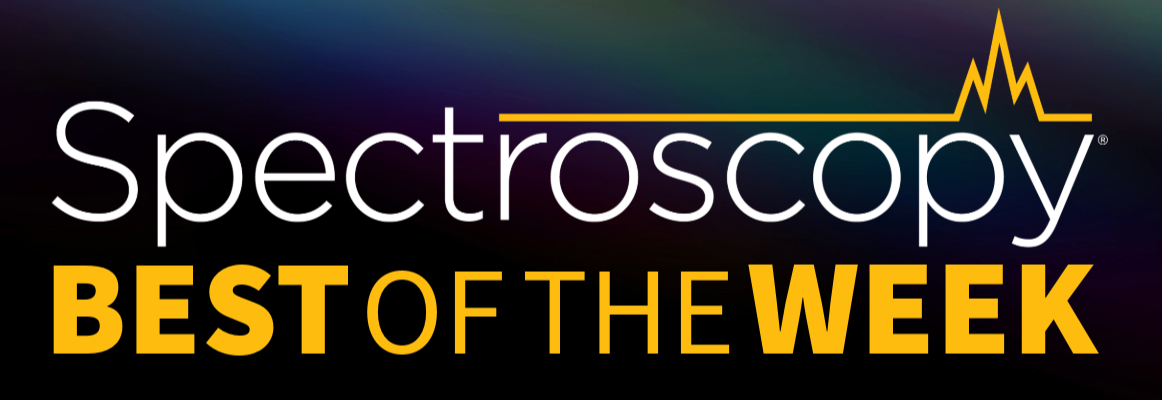Best of the Week: Green Chemistry Chemometrics, Handheld Raman to Fight Fentanyl
This week, Spectroscopy published a variety of articles on the hottest topics in spectroscopy. Below, we’ve highlighted some of the most popular articles, according to our readers. Happy reading!

How Chemometrics is Impacting Green Chemistry Solutions
Will Wetzel
Chemometrics is a multidisciplinary data analysis approach that is becoming popular within the field of analytical chemistry. In spectroscopy, it refers to using multivariate analysis of chemical data obtained using spectroscopic techniques. Although chemometrics is effective in identifying patterns, relationships, and trends in complex data sets, the environmental ramifications of using chemometrics have been largely unexplored. In this recent study led by Dmitry Kirsanov of St. Petersburg University, he and his team explored the role chemometric modeling has in reshaping analytical chemistry towards being more environmentally friendly.
Handheld Raman to Fight Fentanyl—A Crucial New Use for an Established Tool
Patrick Lavery
Fentanyl, which can kill on its own and through being laced with other drugs, is lethal in even the smallest amounts. Law enforcement have been taking multiple approaches to find fentanyl and where it is distributed; one such approach is the use of portable and handheld Raman spectroscopy devices. In late 2023, Metrohm launched a website, idfentanyl.com, to detail their advancements in using handheld Raman for fentanyl detection. Recently, Spectroscopy interviewed Michael Allen, vice president of products and marketing for Metrohm Spectro, asking him about the company’s dedication to this purpose, the fentanyl crisis in general, and the mechanisms involved behind these instrumentations.
New Nanoprodrug System Created to Treat Liver Cancer
Aaron Acevedo
In the United States, approximately 25,000 men and 11,000 women get liver cancer each year, with nearly 19,000 men and 9,000 women dying from the disease. Near-infrared (NIR) fluorescence cancer imaging has been a growing field for preclinical and clinical application for clinical management of cancer patients. It has many advantageous features, including a high spatial resolution, portability, real-time display, and detailed molecular profiling with the multiplexed use of fluorescent probes. This study, led by Liyi Zhou from Central South University of Forestry and Technology, was done to improve the detection of liver cancer treatment by creating a new imaging and treatment nanoprodrug system.
Fruits’ Maturity Stages Measured Using Portable Hyperspectral Imagers
Aaron Acevedo
Camellia oleifera fruits are considered one of the four major woody oil crops globally. To obtain the highest amounts of seed yield and oil content, scientists use determine the optimal harvesting stage criteria for these fruits. In a study out of Nanjing Forestry University, the scientists used a portable hyperspectral imager to help detect maturity stages in Camellia oleifera fruits.
Portable Device Utilizes Machine Learning for On-Site Freshness Evaluation
Will Wetzel
Spectroscopic techniques have been used for on-site food freshness assessment, with food quality being determined by several factors. Determining the nutrient content in food, which is important for consumers to consider when purchasing food items, requires actively monitoring the nutrient content. Since the number of element nutrients is limited and can be present in high concentrations, analysts typically use inductively coupled plasma–optical emission spectroscopy (ICP–OES) for this type of analysis. In a recent study led by Chengbin Zheng of Sichuan University, the scientists used machine learning algorithms in a portable device to detect and differentiate aromatic molecules in food.
New AI Strategy for Mycotoxin Detection in Cereal Grains
April 21st 2025Researchers from Jiangsu University and Zhejiang University of Water Resources and Electric Power have developed a transfer learning approach that significantly enhances the accuracy and adaptability of NIR spectroscopy models for detecting mycotoxins in cereals.
Nanometer-Scale Studies Using Tip Enhanced Raman Spectroscopy
February 8th 2013Volker Deckert, the winner of the 2013 Charles Mann Award, is advancing the use of tip enhanced Raman spectroscopy (TERS) to push the lateral resolution of vibrational spectroscopy well below the Abbe limit, to achieve single-molecule sensitivity. Because the tip can be moved with sub-nanometer precision, structural information with unmatched spatial resolution can be achieved without the need of specific labels.
New Study Reveals Insights into Phenol’s Behavior in Ice
April 16th 2025A new study published in Spectrochimica Acta Part A by Dominik Heger and colleagues at Masaryk University reveals that phenol's photophysical properties change significantly when frozen, potentially enabling its breakdown by sunlight in icy environments.
New Raman Spectroscopy Method Enhances Real-Time Monitoring Across Fermentation Processes
April 15th 2025Researchers at Delft University of Technology have developed a novel method using single compound spectra to enhance the transferability and accuracy of Raman spectroscopy models for real-time fermentation monitoring.